Behind every brand is a story, the one that’s told time and time again, the origin of why it exists in the first place.
On 29 September, LITELOK revealed the details of their newest product to the market for the first time. Before the launch of LITELOK X1, tensions were high, but so was excitement. So much goes into bringing a product to market. In fact, LITELOK X was in development for almost five years.
From concept to creation, X went through rigorous testing, and more than a few angle grinders. The X range is a game changer, an answer to one of the greatest bicycle security threats – angle grinders. It’s a proud moment for the brand, they’ve created entirely new materials and reimagined the popular D-lock format, and for them, X is just the beginning.
Neil Barron, a professor, engineer, entrepreneur, and the man behind LITELOK, shares the highs and lows of the journey of LITELOK.

Away from you as a professional, if we strip things back, who is Neil Barron?
I’m a family guy with a wife and two children. We live on the beautiful Gower Peninsula here in Wales, the country of my birth. I have always loved the outdoors and the sea and so would describe myself as a cyclist and a surfer. I’m not particularly brilliant at either but I just love it all. We live where we live because, before kids, when we lived in London, we were spending all our time travelling down to go surfing and be next to the sea. I’m also a keen motorcyclist and of course tinkerer.
I’m a massive dog lover – my wife Claudia has always had spaniels and I’ve developed the same love for them. I also love food and cooking although I am renowned for making a massive mess in the kitchen.
How did the idea behind LITELOK begin?
The original idea came up in a bike innovation workshop I was helping to run between the Royal College of Art and Imperial College London literally 15 years ago! However, I failed to get anything off the ground until I started again for the umpteenth time back at the start of 2014. The first LITELOK didn’t reach anyone until 2016, so we’re still a relatively young company and some people think we are bigger than we are. It’s small, very agile and dynamic, and we have a fantastic team!
I’d had three bikes stolen; two in London, one in Derby where I used to work for Rolls-Royce aero engines. My initial reaction each time was disbelief and I checked that I hadn’t mistakenly left the bike in a different location. Regardless of the value of the bike, none of mine were that valuable compared with current bikes, but the sense of loss is quite severe. I had a classic 1920s steel framed Raleigh which I bought intentionally as a London commuter bike of low value, knowing it might get stolen. That said, I did get attached to it and was just as gutted when it was stolen.
With LITELOK, what have been your greatest challenges and triumphs?
It’s really difficult developing something new from scratch and getting it to the manufacturing and distribution stage. The challenges are everywhere and daily, but the biggest is probably having enough cash to do the ambitious things and then getting things done quickly. I revel in simplifying design and engineering and always say to people that it’s relatively easy to make something complicated – you just keep adding and adding until you are there. However, to make something simple you need to remove and reduce and refine and that’s the art and the challenge for me. We’ve had a series of people trying to knock us over online – that’s challenging when all you are trying to do is make an excellent product. We’ve learnt from everything, and I suppose LITELOK X is the result of the many years of battling away.
I do have this discussion with my wife Claudia quite often – I’ve chosen to do something really difficult, where people want to break your product. I’m not sure I thought that through well enough at the start, but I’ve adapted to it and am really pigheaded and determined to succeed.
Getting LITELOK X through the various independent tests has to be one of the biggest triumphs and it’s a team effort, requiring our small engineering team to work really hard and focus on what’s important. I get the biggest kick out of my concept work resulting in a beautiful product that people want to own that can help them somehow.

Is there anything that people are often surprised to learn about LITELOK?
Generally, people think we’re bigger than we are, and they can’t believe that I still do loads of hands-on design and engineering work. That surprises me as I’m willing to do anything that needs to be done and honestly, creating great products is my passion, so I’d struggle to hand it over to anyone else. It is a team effort though, so I don’t want to take all of the glory – I am responsible for pushing like mad and the result is a team effort.
What makes LITELOK different?
Where to start?! We create new products from first principles, never following anyone else and never taking anything for granted. We do hard things and sometimes near impossible things. We make our own Nitrogen onsite saving hundreds of miles of gas bottle transportation every day, and have just had a solar roof installed meaning that we can be substantially independent of the big energy companies soon. LITELOK products are intuitive, and we take all of the problems which are inherent with locks and try to solve them in our own way.
All of our products have patents associated with them and a number of these are now granted so we have real intellectual property which hopefully allows us to protect ourselves against unscrupulous companies that might be wanting to copy or imitate.
How has the brand evolved since the launch of LITELOK Gold?
We have a range of products to suit every rider and every occasion from 650g to several Kg. From the beginning, we’ve created some strong brand beliefs and my favourite is, ‘We flex when others break,’ and I think that captures our ethos. We are fiercely proud of being made in Wales and were probably a little shy of saying that at the start.
Let’s talk about LITELOK X, why launch an angle-grinder resistant lock?
This is almost a holy grail to the worlds of cycling, motorcycling and security. Since I’ve been working on locks, battery angle grinders have gone from expensive tools which weren’t very good at cutting, to powerful and affordable tools that can cut most materials and can be bought relatively inexpensively even from supermarkets. Thieves are now angle grinding in broad daylight which is scary. They generally want to be away in 30 seconds which is a problem for the current best-selling locks as they only last that long at best. Where everyone sees problems, I see opportunities.
LITELOK X has been in development for almost five years. Talk us through the journey?
This is a classic inventor story! Five years ago, I was working on a method for joining our GO lock bodies to the flexible strap and I stumbled over some materials and processes which were very very hard to cut. They were, if you like, beyond what we needed for the job at hand but from them, I made a series of material samples and explorations which I demonstrated could last many minutes against an angle grinder. I showed these to some select investors who were blown away. I had no real idea how to make it into a final product at that stage and how to tune the technology performance, but I had something that worked. I set about refining the technology, making it work even better and working out how to scale it and concurrently the best strategy for developing products from the technology.
As security testing requires defence against multiple tools, it’s no good just having an angle grinder resistant material alone. You need all of the defences. I decided that the U-lock format was a really practical and understandable format that many riders loved, it could defend against all of the tools and attacks very well, except for the grinder. So I set about armouring the U-lock, taking the defences against bolt cropping, saws, twist attacks etc and adding the angle grinder resistance. Not as simple as it sounds. I managed to attract government support through the Innovate UK programme and collaborated with Swansea University. This enabled access to amazing metallurgists, materials scientists and equipment like the scanning electron microscope. We used this to make sure that what we were doing was robust from a metallurgical and engineering perspective, testing against all kinds of combined attacks. All of this was happening throughout the COVID-19 lockdown, so we’ve had a ridiculously busy few years but also immensely productive, as I developed two other security technologies across that period as well!
The reality is that even the best locks can be defeated given time, correct knowledge, and tools, so the objective was to get to the right level of performance and therefore price for the rider. This has taken a fair amount of time but has also resulted in a portfolio of patent applications and other directions we could take the Barronium™ technology.
The LITELOK X family is made up of LITELOK X1 which is affordable and aimed at anyone with a bike they want to protect, and LITELOK X3 which has an Abloy Sentry cylinder and even more Barronium™ for people wanting the ultimate deterrent.

Barronium™ is arguably pretty special, but in more human terms, what is it and where did the concept come from?
I’ve been trying to think of ways to explain this to people as the super scientific ones aren’t always that accessible, plus we have some engineering magic which is kind of secret. We describe Barronium™ as 'Fused Composite Armour,' and I think that’s a good starting point. Composite materials are made up of multiple materials held together. Angle grinding involves extreme abrasion which is related to things like sawing and filing but using electric motors and fairly sophisticated discs containing the hard materials. The hard materials gouge away at the steel to make the cut.
To disrupt this and slow it down you need even harder materials of the right size and in the right location. The hardest materials are ceramics, and the hardest material currently known is diamond. We use very hard materials which are in a particular recipe and fused to (i.e. can’t be separated from) the hardened steel of the lock which then defends against all of the other tools I mentioned earlier. Ceramics and even diamond are very hard, but not very resistant to impact and bending etc so you need other materials to hold them in place and make it all work. Think of a knife and fork and a plate. The knife and fork generally don’t scratch the plate as that would be horrible for food hygiene so you know that the plate is much harder than the cutlery, but if you drop the plate you know it will smash. So all in all you have a system which works for cutting your food. We’re effectively putting the cutlery and the plate in your lock. That’s my best attempt at an analogy which I know is a bit bizarre, but I do hope it works for some people!
What are your hopes for the LITELOK X series?
LITELOK X should provide a real step change in bike security resulting in lower thefts, lower rider anxiety and more cycling and motorcycling. These are needed right now from environmental and health as well as financial perspectives.
What’s next for LITELOK?
I couldn’t possibly divulge – all I will say is expect us to just keep getting better and better as that’s our mission!
Discover more about the LITELOK story and the innovative technology that drives the products. The LITELOK X1 armoured D-lock is available to buy now.


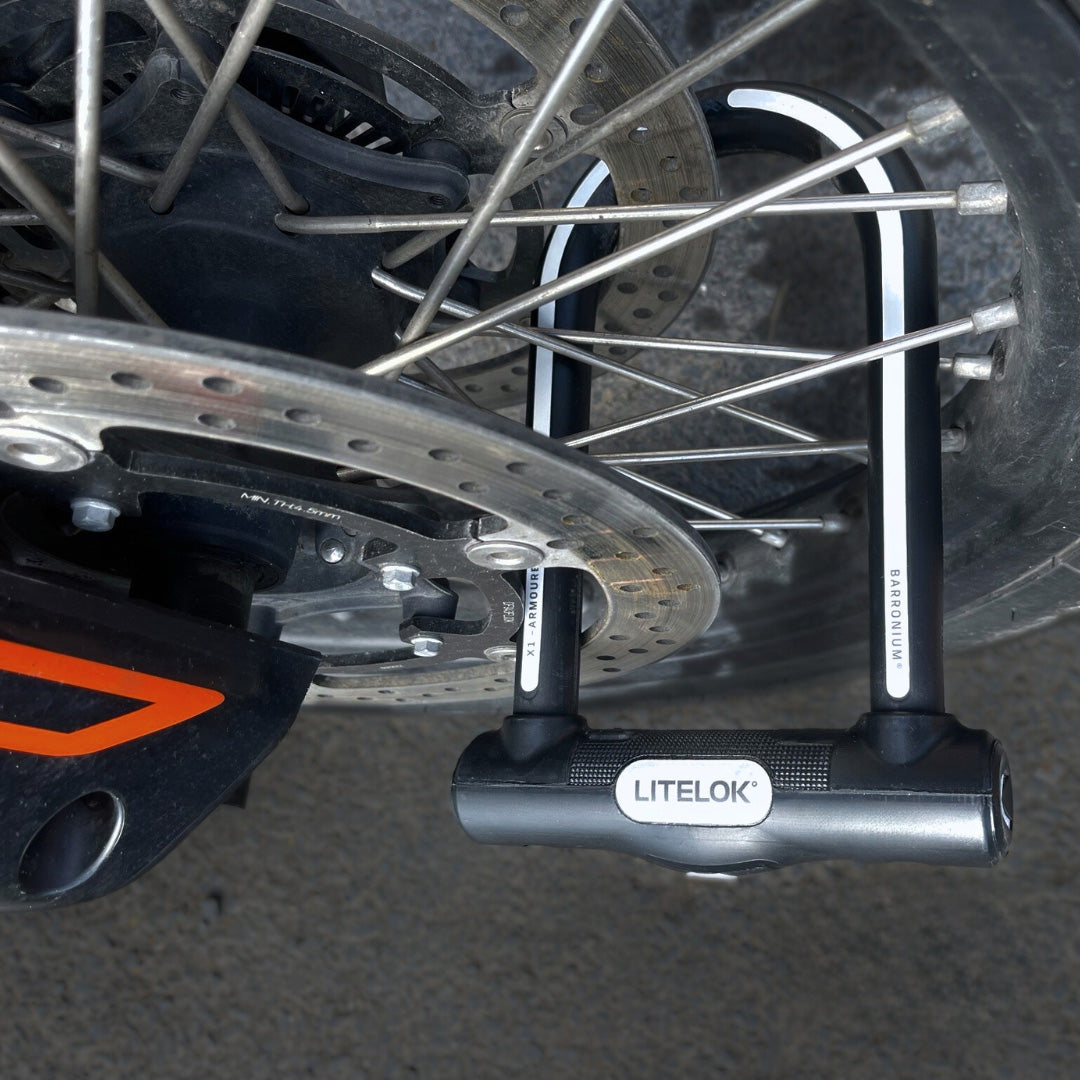
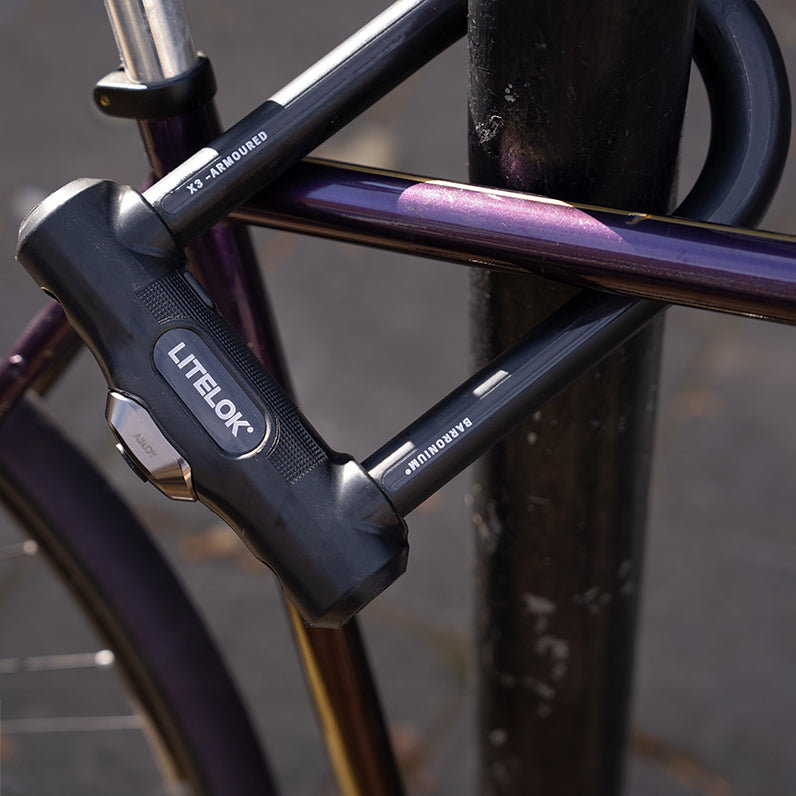
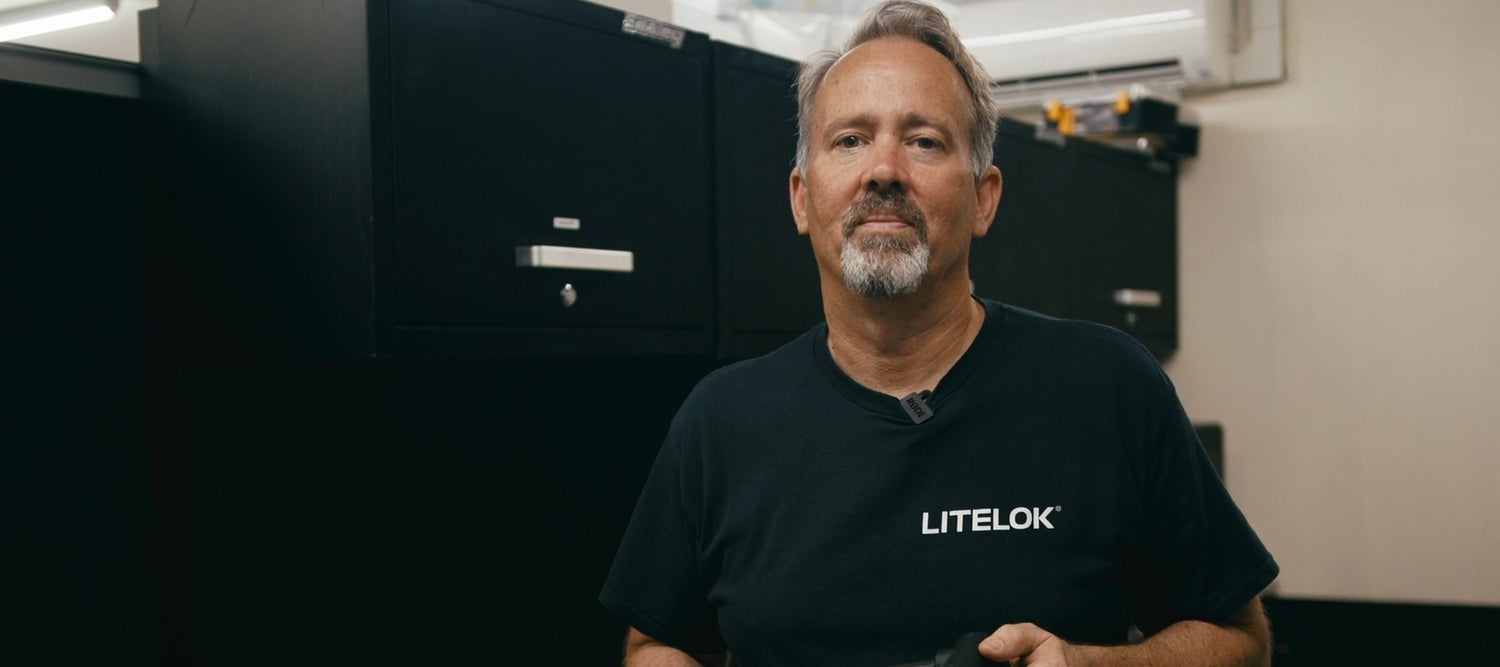
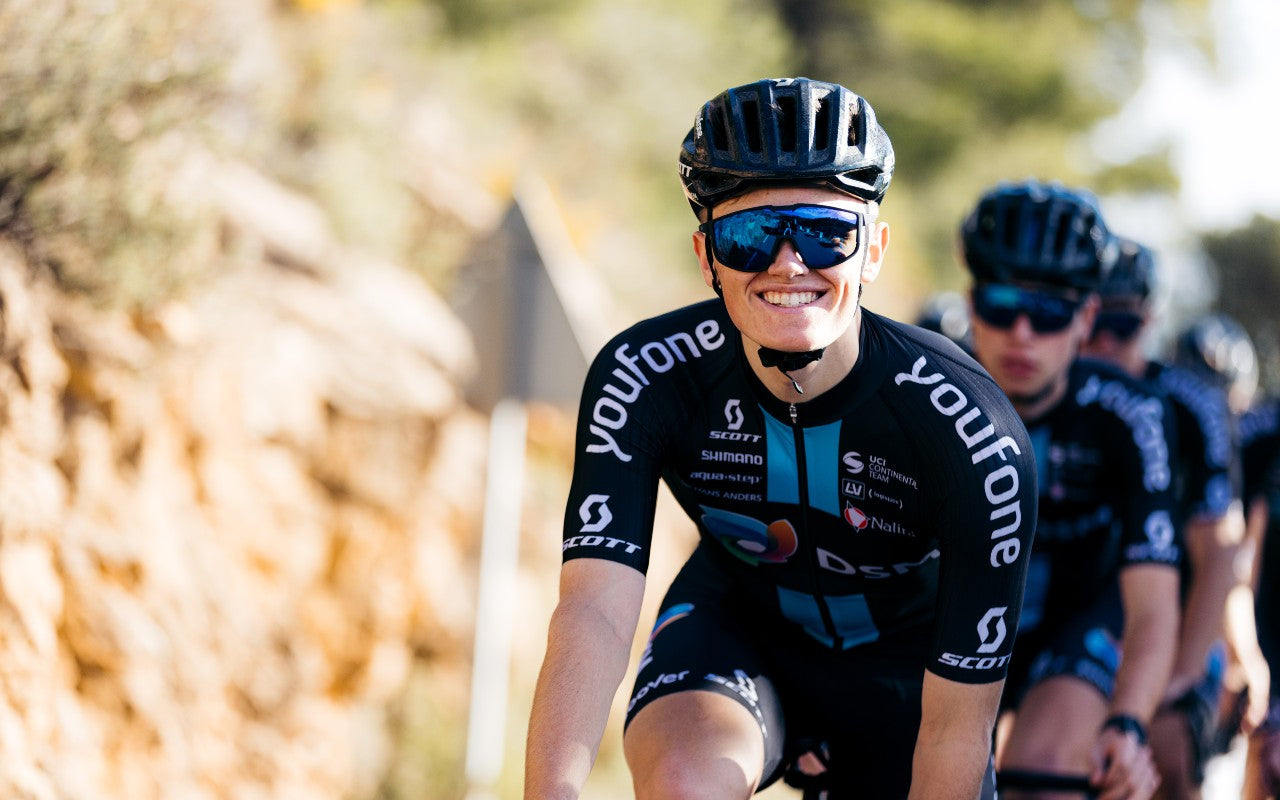
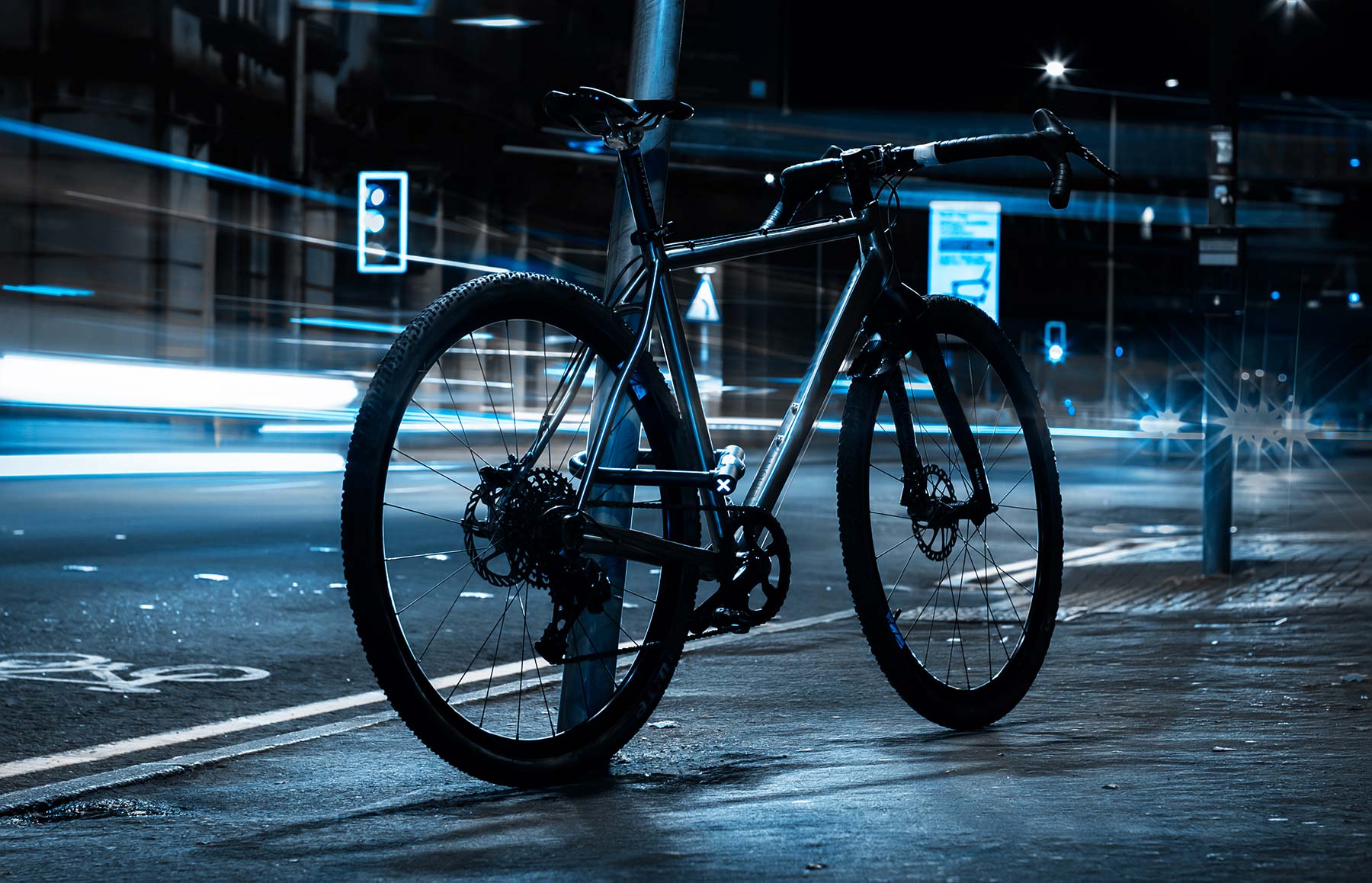
Leave a comment
This site is protected by hCaptcha and the hCaptcha Privacy Policy and Terms of Service apply.